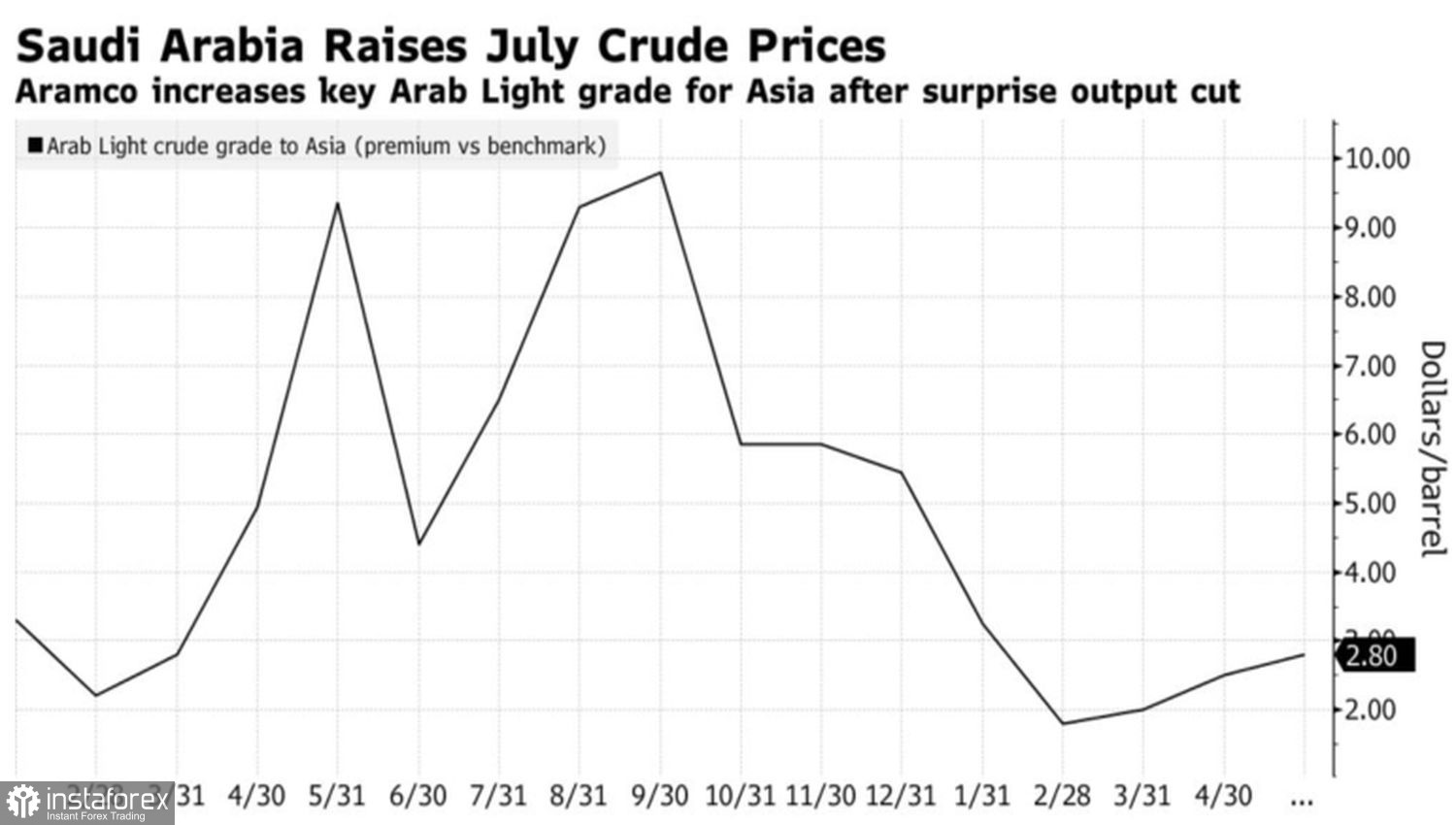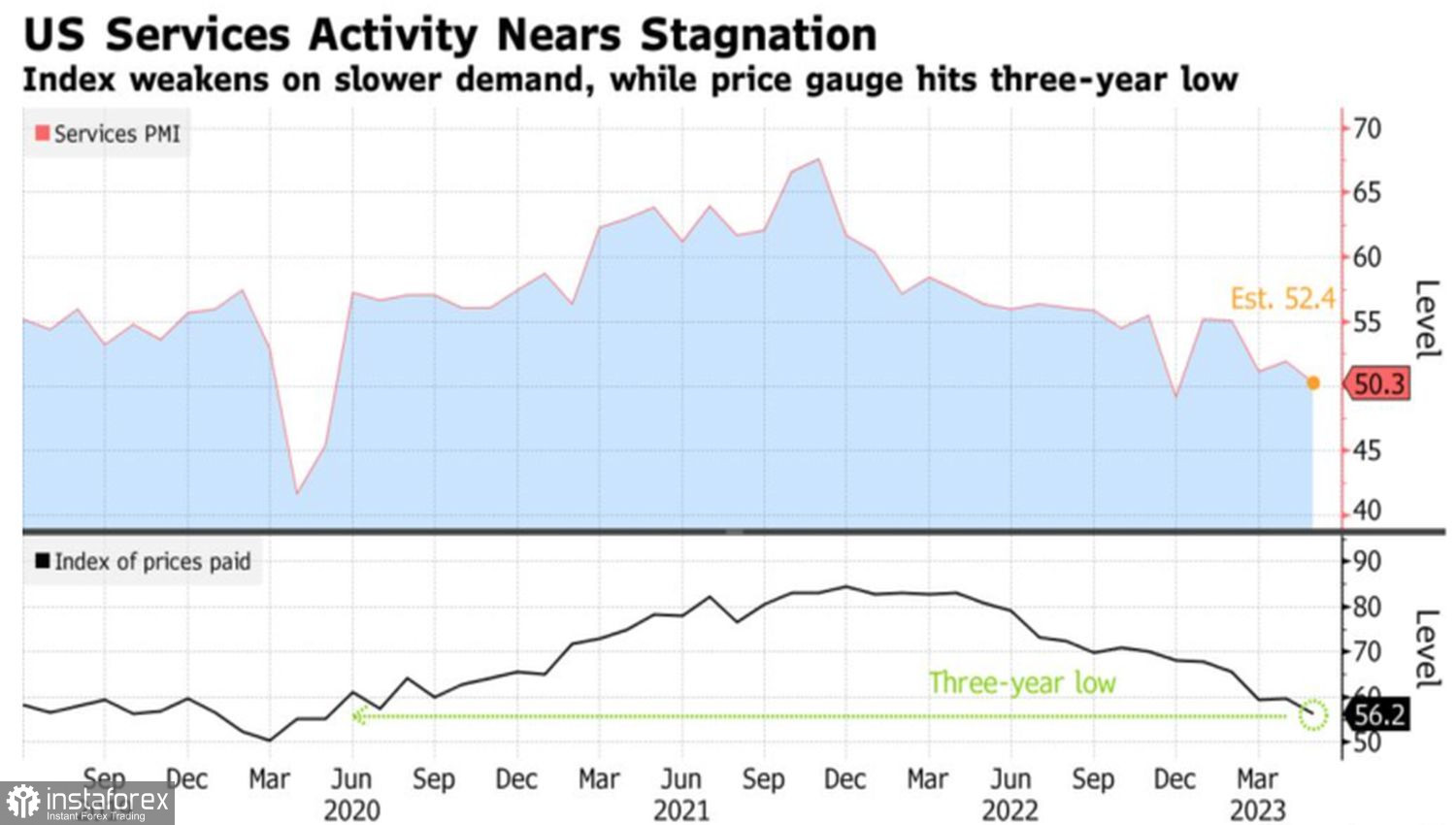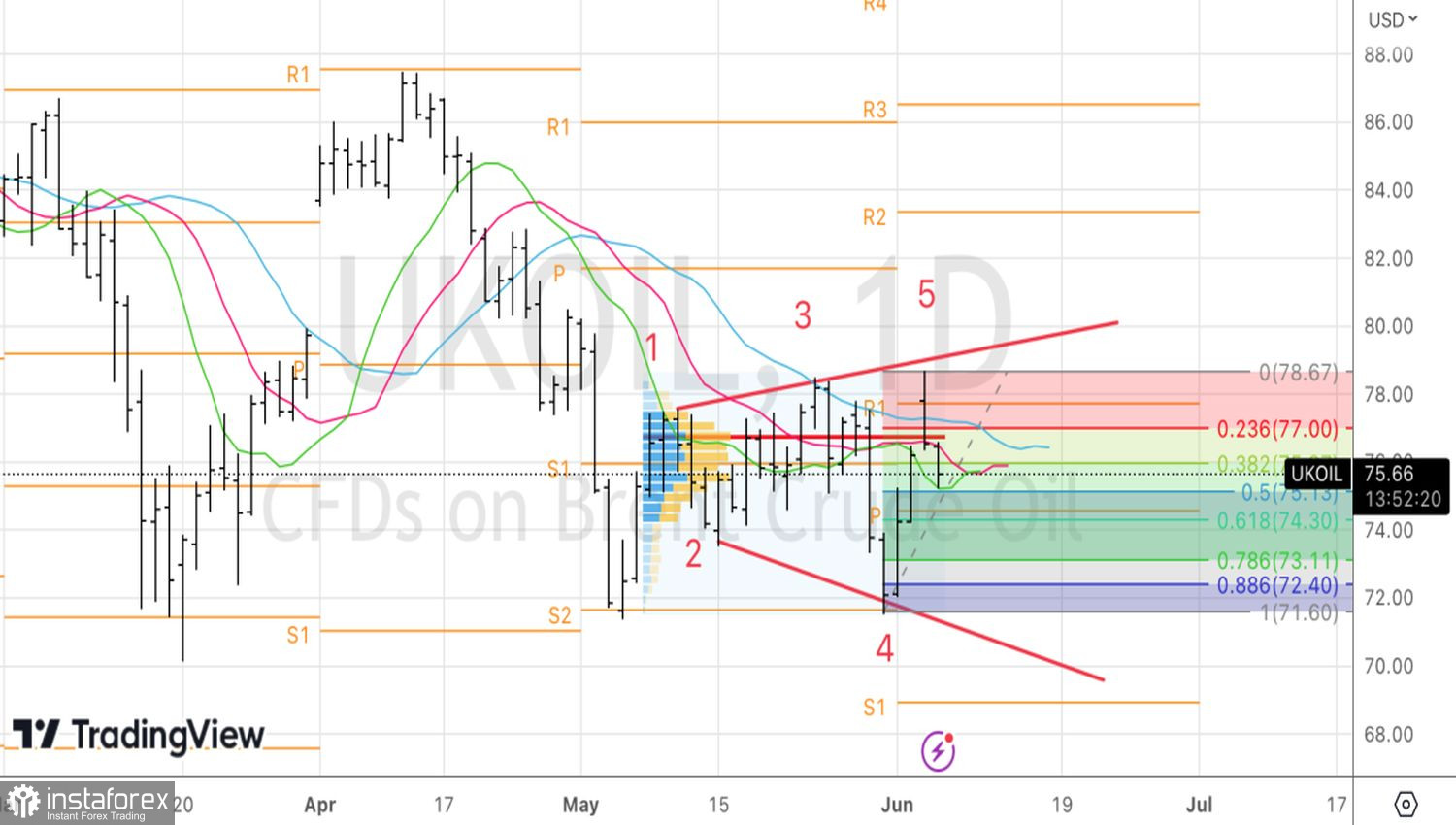Saudi Arabia decided to intrude into oil pricing on its own. The Kingdom announced a 1 million b/d production cut in July to 9 million b/d, the lowest level since June 2021 and rarely seen over the past decade. Riyadh called its verdict a lollipop or sweetener for OPEC+. No one else in the cartel is going to scale down output rates. As a result, the oil market opened the week with a gap up, but quickly lost its advantage.
In order to understand why this happened, you need to know what is happening in the market. From a fundamental point of view, it is as plain as day: OPEC and its allies are cutting production rates, Western sanctions are curbing Russia's crude production capacity, and the resilience of the US and European economies, coupled with China's recovery, generate buoyant demand. In this context, Reuters experts predict an average Brent price of $84.73 in 2023, although the North Sea grade is currently quoted near $75 per barrel.
However, the oil market is driven more by macroeconomics than by the balance of supply and demand. Soaring prices might entail new inflation extremes, protracted cycles of monetary tightening, and recession. This is an extremely negative scenario for global demand. Therefore, it is not surprising that the bears dominate the market. Interestingly, Saudi Arabia's surprise decision, including both cuts in production and higher prices for its customers, did not alarm investors.
Saudi Arabia's premium versus Brent crude premium

Riyadh is well aware of the sacrifices it is making. This is the loss of its market share and the reduction of foreign exchange earnings. Meanwhile, Russia is already pushing Saudi Arabia out of Asia. All in all, Saudi's budget revenues may remain at the same level if the Brent price rises. This is not happening for a while.
The output cut of 1 million b/d is set for one month with the right to further prolongation. Considering the current market situation, it didn't particularly frighten investors. They are still focused on the federal funds rate hike in July. The probability of such an outcome is about 65%. Higher borrowing costs slow down the economy and risk pushing it into recession. This is a clear negative fundamental for oil demand.
US ISM Non-Manufacturing PMI


Another headwind for crude prices was disappointing statistics on business activity in the US services sector. The ISM services PMI fell to 50.5 in May amid optimistic forecasts by Bloomberg experts. The critical mark of 50 is within easy reach. Contraction in the US services sector fuels speculations about a recession in the American economy. If the data on Chinese imports is also disappointing, Brent crude may return to local lows near $72 per barrel.
Technically, an Expanding Wedge pattern was formed on the daily chart of the North Sea benchmark grade. A rebound from support at $75.2 and a subsequent return above the levels of $76 (38.2% Fibonacci) and $77 (23.8%) per barrel may assure oil traders to open long positions.
 English
English 
 Русский
Русский Bahasa Indonesia
Bahasa Indonesia Bahasa Malay
Bahasa Malay ไทย
ไทย Español
Español Deutsch
Deutsch Български
Български Français
Français Tiếng Việt
Tiếng Việt 中文
中文 বাংলা
বাংলা हिन्दी
हिन्दी Čeština
Čeština Українська
Українська Română
Română

